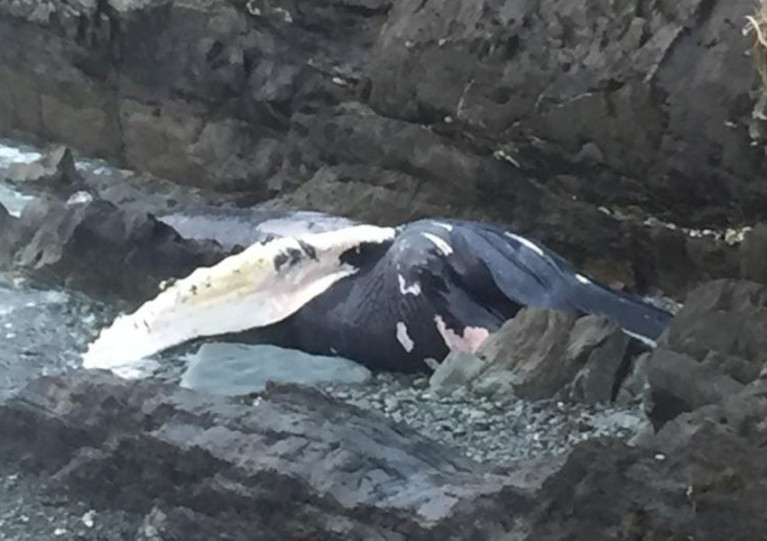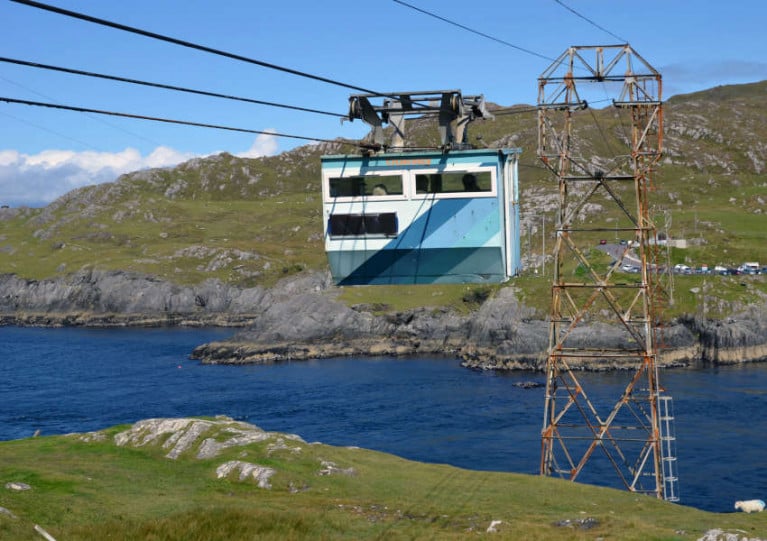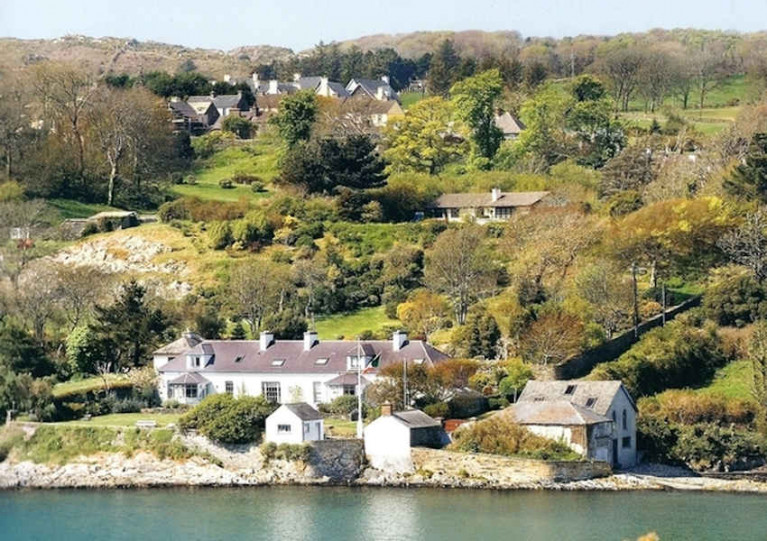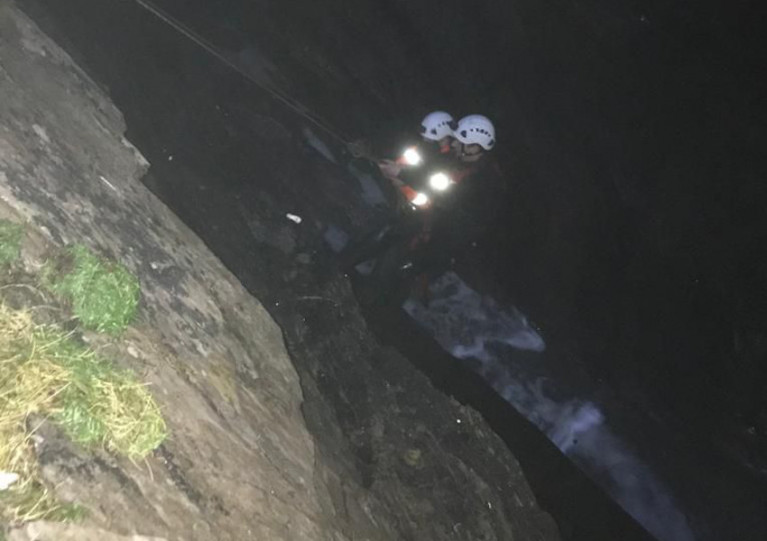Displaying items by tag: west cork
Four Cork divers put a full year of training and preparation to the test as they embarked on an expedition to the wreck of the Lusitania off the Old Head of Kinsale last week.
As Cork Beo reports, Timmy Carey — who had previously explored the wreck five times — was joined by three novices in the first ever all-Cork dive to the final resting place of the RMS Lusitania, the Cunard liner which was torpedoed by a German U-boat during the First World War.
For many years the wreck was owned by US businessman Gregg Bemis, who supported numerous dives to the site to learn more about its fate — which has sparked numerous theories about its demise and its cargo. Some of these were tackled in a somewhat controversial documentary by National Geographic in 2012.
Bemis signed over ownership of the shipwreck to the Old Head of Kinsale Lusitania Museum a year before his death at the age of 91 in May 2020.
Considered the “Mount Everest of dives”, the Lusitania is a challenging dive at almost 100 metres below the surface in total darkness.
But Ronan Barry, Brendan Desmond and Dick Vaughan, fellow members of the Blackwater Sub Aqua Club along with Carey, proved their mettle as they had the rare opportunity to get up close with the wreck for nearly half an hour.
Cork Beo has more on the story HERE.
Trinity Researchers Tag Basking Sharks in West Cork to Learn More About Ocean’s Second Largest Fish
Researchers from Trinity’s School of Natural Sciences were in West Cork earlier this month to tag some of the many basking sharks that have been frequenting our shores — and learn more about the second largest fish in the world’s oceans.
Funded by the Irish Research Council and Science Foundation Ireland, Assistant Professor Nicholas Payne and PhD candidate Haley Dolton spent a week on the water with West Cork Charters in which they managed to apply tags to four basking sharks.
These electronic tags will accumulate data about the sharks’ behaviour and physiology as they move around the coast feeding on plankton.
The goal, the researchers say, is to learn more about the anatomy and physiology of these gentle giants and hopefully guide conservation efforts for this endangered marine wildlife species.
“Basking sharks are a difficult species to study because they are not very abundant and they only grace our shores for a brief period each year, from April to August, so I am delighted we were able to learn so much about them this past week,” said Dr Payne.
Sadly the first phase of the pair’s work involved dissecting the remains of two basking sharks that washed up on the West Cork coast at the end of April, as previously reported on Afloat.ie.
“We would rather not have have had the opportunity to examine the two sharks that died prematurely before we took to the sea, but these sad events did at least help us learn more about them,” Dr Payne explained.
“Basking sharks are an endangered species and at risk of death from fishing bycatch and from getting struck by boats, so the more we know about them — especially their behaviour and physiology — the better chance we have of protecting them.
“The experience we had of observing live sharks in all their glory really emphasises that we should do our best to protect these incredible animals.”
Dolton added: “The amount of data we managed to collect throughout the whole week was phenomenal and beyond what I’d hoped for. We are currently analysing all the results and look forward to sharing our findings with everyone later in the year.”
Schull Harbour Sailing Club Confirms Calves Week Regatta 2021 for August 3-6 in West Cork
The Commodore of Schull Harbour Sailing Club, Sean Norris, has confirmed that the 2021 Calves Week Regatta in West Cork is going ahead as planned in August.
Calves Week has had a strong interest and has received 17 entries across all classes to date with reports of interest in entering also being expressed by some high profile new and returning campaigners.
"I would like to confirm that with the current easing of the Health Restrictions, our event will proceed on the previously announced dates of August 3rd to 6th, 2021" Norris told Afloat.
 Class Zero yachts Rockabill (on starboard) and Eleuthera competing in the 2019 Calves Week. Photo: Bob Bateman
Class Zero yachts Rockabill (on starboard) and Eleuthera competing in the 2019 Calves Week. Photo: Bob Bateman
Notably, the regatta has a number of entries to date in Class 4 and with more expected, Norris believes this will probably be the biggest in participation numbers in any regatta for a number of years.
 Calves Week Race Officer Alan Crosbie
Calves Week Race Officer Alan Crosbie
On the water, it will be very much business as usual at the CD Environmental sponsored Calves Week with Alan Crosbie returning as Race Officer, and organisers also hope to have some new course options available for participants.
"We are very hopeful that the heath regime will be very different by the time our event comes around but we are equally satisfied that all the necessary arrangements are and can be put in place to enable the event to proceed even if we do not move forward significantly from where we are now", Norris said.
"While things will be different ashore this year, we would ask all participants to bear with us and the local businesses in ensuring that all is done in accordance with whatever guidelines are in place at that time so that everyone can enjoy our event in the safest possible way, he added.
West Cork is enjoying a veritable bounty of whale sightings “in dolphin numbers”, as the Southern Star reports.
Video recorded last week near Union Hall shows two humpbacks who followed a whale watching vessel “in a very sociable mood”, according to Cork Whale Watch’s Colin Barnes.
He descried it as the best marine wildlife sighting of its kind in the last two decades — a sentiment echoed by the Irish Whale and Dolphin Group’s Padraig Whooley.
Noting a recent report of as many as 100 minke whales spotted on a single boat trip, Whooley said the whale activity off the South Coast at present is “exceptional on a global scale”.
The Southern Star has more on the story HERE.
Two Basking Sharks Wash Up on West Cork Coast Within Days
The carcass of a second basking shark has washed up on the coast of West Cork just days after the discovery of an unusually fresh specimen 20km away.
According to Cork Beo, the second large fish was found at the weekend near Courtmacsherry and is believed to have been dead for some time.
Another basking shark carcass measuring a whopping seven metres that beached at Inchydoney last week presented a rare opportunity for marine biologists to examine relatively fresh remains.
Sad event, but this basking shark that washed up in Cork on the weekend provided valuable info on the physiology and anatomy of these incredible animals. More knowledge = more effective conservation ?. Thanks Padraig @IWDGnews and @Corkcoco for help! @TCDZoology @IrishResearch pic.twitter.com/frTcCMPjsF
— Nicholas Payne (@nicklpayne) April 26, 2021
It’s unknown how the female shark died, but dissection revealed that the marine wildlife giant still had food in its stomach.
“It’s sad of course to see such a big beautiful animal like that, but it’s good to try and get something positive out of it,” Trinity lecturer Dr Nicholas Payne said.
Basking sharks have been spotted in great numbers off West Cork this month, with video of a kayaker surrounded by the second biggest fish in the sea making a splash last week.
Basking sharks with kayaker Paul Cleary this morning off Red Strand #WestCork. Best viewed in full screen. These are the 2nd largest fish on the planet. Bigger shark here is ~20ft long. #Cork #Ireland @BaskingIrish @IWDGnews @wildatlanticway @theskibeagle @CorksRedFM @Corks96FM pic.twitter.com/jSjTKy9Lu3
— Intothewild Ireland (@intothewild45) April 20, 2021
Tragedy in West Cork As Young Man Dies After Fall Into Blowhole
RTÉ News reports that a 22-year-old man has died after falling into a blowhole near Garretstown Beach in West Cork last night (Saturday 24 April).
It’s understood that the man had been part of a group camping overnight at the beach, and that a friend who tried to rescue the casualty is being treated for hypothermia.
Public Warned to Stay Away from West Cork Whale Carcass
The Irish Whale and Dolphin Group (IWDG) has warned the public to stay away from the final resting place of a humpback whale carcass that washed ashore in West Cork last month.
And according to the Southern Star, poor weather forecast for later this week has dampened hopes to potentially retrieve the marine wildlife remains for public display.
The carcass of the juvenile humpback whale is only the ninth recorded stranding of the species in Ireland, as previously reported on Afloat.ie.
First spotted in the waters of Roaringwater Bay, it eventually came to rest on the rocky shore at the foot of steep bank at Colla West near Schull, where IWDG volunteers have examined the remains over the weeks since.
Plans had been mooted to preserve the skeleton as a potential tourism draw for the area, the IWDG’s Pádraig Whooley said, though this would be “at great expense”.
“Although the plan was tentative, if successful, it would be a wonderful opportunity because the only other humpback whale on display is in the Natural History Museum, and that dates back to 1893,” he added.
The Southern Star has more on the story HERE.
RTÉ News reports on West Cork farmers’ dismay at the decision to reduce the operating hours of the cable car link to Dursey Island where they graze their livestock.
The winter schedule, which sees the service shut down at 4.30pm daily, usually ends at the beginning of March but has been extended by Cork County Council amid the continued national Level 5 lockdown.
However, mainland farmers argue that the reduced service leaves them little time to manage their animals ahead of the calving and lambing season.
RTÉ News has more on the story HERE.
A 19th-century house in West Cork that once comprised six coastguard cottages is now on the market for €1.95 million.
As the Irish Examiner reports, Rocket House — named for the lifesaving rocket launch that once stood on the grounds — sits in the picturesque environs of Castletownshend on ‘Ireland’s Riviera’.
And it comes at a bargain price for this class of property, as it previously sold to overseas buyers for more than €3.5 million.
That’s quite a deal for a house whose history includes rescues from the Lusitania among other notable disasters off a notorious stretch of coastline.
The Irish Examiner has much more on the home and its history HERE.
Woman Trapped in West Cork Sea Inlet Rescued By Coastguard & Lifeboat Crew
A woman was rescued from a sea inlet in West Cork after a more than 90-minute ordeal yesterday evening, Thursday 25 February.
The casualty had got caught in the swelling tide just off the slipway at Dunworley Beach near Butlerstown before 5pm.
Fortunately her shouts for help were heard above the sinkhole leading to the inlet a local walker, who immediately called the rescue services.
Courtmacsherry RNLI’s all-weather lifeboat attended the scene alongside the Irish Coast Guard’s helicopter Rescue 115 from Shannon and the land-based Old Head/Seven Heads coastguard unit, who rigged up their ropes to climb down the sinkhole and reach the casualty.
The woman was then successfully raised up the sink hole cliff face to the care of a waiting HSE ambulance crew.
A woman in her 20s has been rescued after being washed into a cave & then getting trapped at Dunworely #WestCork. The rescue has been described as very complex. The casualty is now at home following her ordeal. @VirginMediaNews @IrishCoastGuard @RNLI @CourtmacRNLI @AmbulanceNAS pic.twitter.com/UXz0OguCku
— Paul Byrne (@PaulByrne_1) February 25, 2021
Courtmacsherry RNLI volunteer lifeboat press officer Vincent O'Donovan said: “It was great to see the total dedication of so many voluntary people from all the rescue services today and everyday in these difficult Covid times, who drop all and rush to the aid of others in difficulties.”
O'Donovan reiterated the importance of calling the rescue services at 112 or 999 quickly once any incident like this occurs, as they are always at the ready 24 hours a day — and every minute is so important to any person in difficulty.
































































